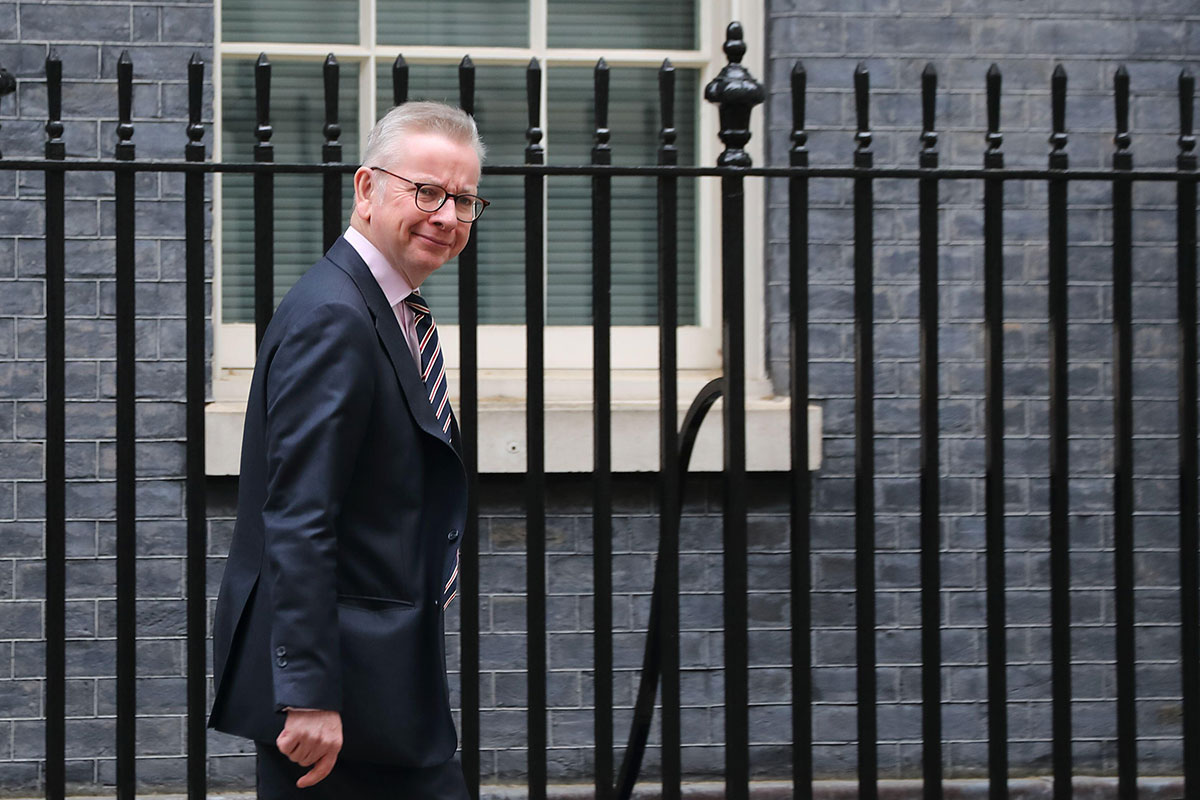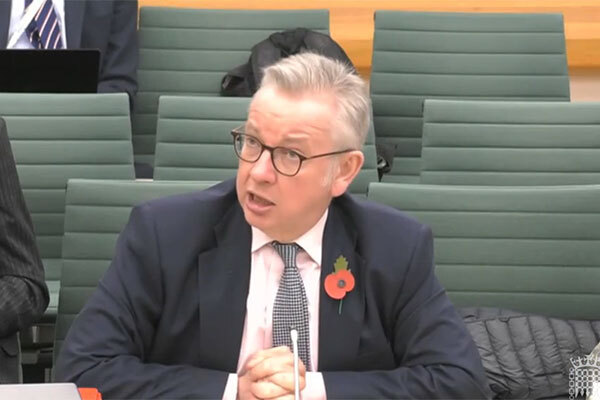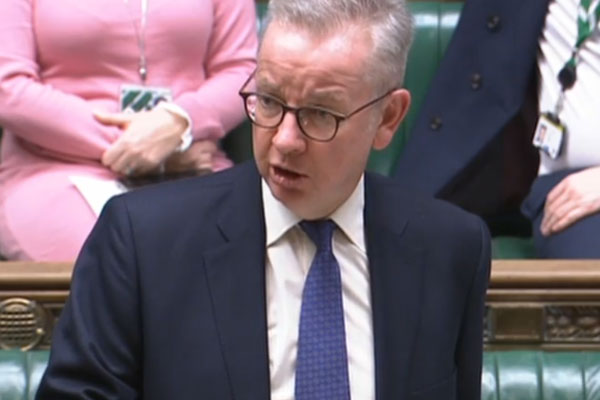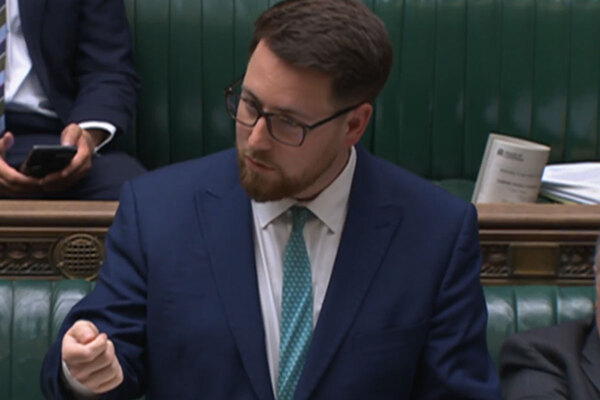You are viewing 1 of your 1 free articles
Gove gone: a breakdown of the former housing secretary’s 10 months in charge
Another housing secretary bites the dust, as Michael Gove is sacked amid a wave of ministerial resignations. It has been a busy 10-month term for the now former housing secretary. Lucie Heath and Jack Simpson assess his time in charge
In the past hour it has emerged that it seems Boris Johnson will finally relinquish power following a wave of resignations across his party that made his position to continue leading the country untenable.
Among the 50-plus resignations in the past 48 hours, there was also one sacking.
When news broke last night that Michael Gove, arguably Mr Johnson’s most experienced minister, had been sacked, there was a reaction from the housing sector.
Having taken over as housing secretary in September last year, Mr Gove moved quickly to put his stamp on the department.
Within days, the Ministry of Housing, Communities and Local Government became the Department for Levelling Up, Housing and Communities. And this shake-up continued through Mr Gove’s stint leading the department.
From progress on the Building Safety Bill, to the pushing-through of much-delayed reforms to the social housing and private rented sectors, to the ripping-up of his predecessors’ planning reforms, Mr Gove’s tenure at DLUHC has been far from boring.
Inside Housing assesses the key policies, laws and actions that have defined Mr Gove’s time in charge.
The building safety crisis
Arguably, the building safety crisis is the area in which Mr Gove has had his greatest successes.
After nearly four years of limited action post-Grenfell, and ever-growing frustration among leaseholders living in dangerous blocks and facing huge remediation bills, Mr Gove’s 10 months in charge of the department have finally seen progress in this area.
It was clear from his first appearance in front of the Levelling Up, Housing and Communities (LUHC) Select Committee in November last year that Mr Gove wanted to take a more interventionist approach to the building safety crisis. This included unpicking many of the policies his predecessor Robert Jenrick had put in place.
During that meeting, Mr Gove said that the highly unpopular plan to introduce a new loan system for leaseholders in buildings under 18 metres tall, which would see the costs of remediation spread across decades, would likely be scrapped. A more proportional approach to fire safety was also promised.
He also set his stall out to target developers, saying that while the government had some responsibility for the building safety crisis, “while the sheriffs may not have been on the ball, the cowboys were still behaving like cowboys”.
The first indication Mr Gove’s plans to fix the building safety crisis came in December last year when Inside Housing revealed that he was weighing up plans to ask the Treasury for extra cash, bring in bans for developers that did not “do the right thing”, and scrap the highly unpopular Consolidated Advice Note, which brought thousands of extra buildings into the building safety crisis.
After the spike in cases of the Omicron variant of COVID-19 delayed this by a month, in January the plans were finally made public. While Mr Gove could not get the extra cash from the Treasury, he laid out a plan to try to recoup the funds from those that built these buildings, as well as getting them to commit to fixing the buildings.
After a back and forth that lasted a few months, Mr Gove was successful in getting commitments from many of the large builders to fix all their buildings above 11 metres tall.
He also implemented a new building safety levy for large developers to pay into, which he expected to raise £3bn over 10 years to pay for buildings that had no identified builder or freeholder.
However, it was not just commitments that symbolised Mr Gove’s approach to building safety. His time in charge saw a lot of legislation put in place, too. The Building Safety Bill had already begun its journey into parliament before Mr Gove became housing secretary, but this did not stop him from putting his own imprint on it.
Under Mr Gove, there were for the first time protections for leaseholders written into the bill. Not least the rule that would see the amount any leaseholder would have to pay for building safety issues at £15,000 for those in London, and £10,000 for those outside the capital.
The bill also includes tougher repercussions for freeholders and managing agents that still try to extract remediation funds from leaseholders, with new laws brought in last week that would see those who issued bills face potential jail terms of up to 10 years.
Mr Gove’s work has by no means fixed the building safety crisis. Many leaseholders still face costs for interim emergency measures, and those in buildings under 11 metres tall, in orphan buildings and in disenfranchised buildings could still face costs.
Commitments from companies that manufactured the dangerous materials installed on buildings across the country have also not been forthcoming. Mr Gove’s actions with regards to them have been largely confined to strongly worded letters to trade bodies that some of the biggest culprits are not members of, and public criticism of them.
Planning
Mr Gove came into power a year and a half after his predecessor Mr Jenrick published the Planning White Paper, a radical set of reforms that proposed replacing England’s current planning laws with a zonal system that would see planning automatically granted in certain areas designated for development.
Little progress had been made on the reforms since the white paper was published in August 2020. This is likely due to the huge backlash to the policies, both from Labour MPs – who branded the white paper a “developer’s charter” – and, more importantly, from Conservative backbenchers concerned about the impact the reforms would have on the green belt.
Former prime minister Theresa May was a vocal critic of the government’s plan to alter the algorithm that calculates housing need within local areas, branding the policy “mechanistic” and “ill-conceived”.
Mr Gove was clearly alert to the concerns within his party as reports were already swirling within days of his appointment as housing secretary that the reforms had been put on hold. Mr Gove confirmed that the reforms were being reviewed during his visit appearance in front of the LUHC Select Committee two months into his role.
While the majority of the proposals in the Planning White Paper have now been dropped, including the controversial zonal system, one important reform for the sector has remained under Mr Gove: the plan to replace Section 106 with a single Infrastructure Levy.
The new Infrastructure Levy is included in the recently published Levelling Up and Regeneration Bill, alongside a few other less controversial planning changes. The bill is currently at the committee stage, although what will happen with the legislation now is anyone’s best bet.
Private rented sector reform
The policy to abolish Section 21 ‘no fault’ evictions was first put forward by Ms May during her final months as prime minister.
The plans remained in the Conservative Party’s manifesto for the 2019 general election, however progress in implementing the reforms has been slow, with ministers blaming the pandemic.
Over the past two years, ministers have promised that the ban on Section 21 evictions would be included as part of a wider set of reforms to the private rented sector that would be published once the immediate pressures of responding to COVID-19 had ceased.
Mr Gove repeated these promises when he took up his role as housing secretary and the department finally came true to its word last month when the Renters’ Reform White Paper was published.
The white paper was well received by those who have been campaigning for stronger rights for renters.
It is difficult to know how much credit Mr Gove should be given for this, considering the reforms were well in motion by the time he took up his post, however it is probably safe to say that he was broadly supportive of the contents and would have worked hard to push them through parliament.
Campaigners will be worried that his successor might not be quite as sympathetic to the plight of private renters.
Social Housing Regulation Bill
In the immediate aftermath of the Grenfell Tower fire, the government promised major reforms to the social housing sector, which were to be laid out in a Social Housing Green Paper.
Mr Gove took up the role of housing secretary more than four years later. By this time we had seen a Social Housing Green Paper and a Social Housing White Paper, but legislation was yet to be published.
In the meantime, the sector had come under increased scrutiny following the investigation into poor conditions within social homes, led by ITV News and activist Kwajo Tweneboa.
Mr Gove offered his opinion on the sector just weeks into his new role, when he told the Conservative Party conference that the quality of social housing was “scandalously poor”.
He promised that this issue, alongside the wider problems brought to attention by the Grenfell Tower fire, would be addressed in the long-awaited Social Housing Regulation Bill, which was finally published last month just days before the fifth anniversary of the fire.
The bill included wide-ranging changes for the sector, many of which were in motion long before Mr Gove took up the role of housing secretary, such as the creation of a new consumer regulation arm of the Regulator of Social Housing (RSH).
One new policy brought in under Mr Gove is the plan to ‘name and shame’ social landlords that fail to meet standards.
Mr Gove has already put this plan into action by publicly calling out landlords that have been criticised by the Housing Ombudsman, both on social media and by publishing open letters. Some of the landlords that have been ‘named and shamed’ to date include Clarion and Housing Plus Group.
Housebuilding
While it has been go, go, go in many areas of Mr Gove’s tenure, on development and housing numbers he has shown some restraint.
This has been most apparent in his seeming reluctance to commit the government to its 300,000-homes-a-year target.
Since midway through the last decade, it has been a key tenet of Tory housing policy to aim for the golden 300,000 figure by the mid-2020s.
However, it would appear that with a series of headwinds on their way that will inevitably stymie the rate at which the country can build, Mr Gove has used his time in charge to temper expectations.
In May when talking to the BBC, he declared that he did not want the 300,000 target to be a “Procrustean bed”.
For those who are not well versed in Greek mythology, Procrustes was a pretty horrible bandit who would do rather grim things to ensure victims fitted in his iron bed. In everyday life the term ‘Procrustean bed’ is used to describe situations where an arbitrary standard is used to measure success.
While Mr Gove was keen to stop short of saying that the target had been dropped, he was keen to focus on the quality of homes, stating while “arithmetic is important, so is beauty”.
The problem is that with a housing waiting list of more than two million, arithmetic is not only important, it is essential.
In truth, with inflation on the up and the price of materials rising, the end to Help to Buy, and a keener focus from housing associations on existing buildings over development, the number of homes being built is likely to fall from the 240,000 built last year.
Mr Gove understood this and wanted to mentally prepare the public for housing numbers to drop. He made the right noises on building social rent homes. But let’s be honest, every housing minster and secretary in recent years has talked a good game on social rent homes and good balance of stock. But with the highest number of social rent homes built in recent years reaching less than 7,000, those warm words have not been backed up by the figures.
Another particularly interesting chapter in Mr Gove’s time as housing secretary came when he was completely blindsided by Number 10 over a plan to extend the Right to Buy to housing associations.
This was particularly clear at an LUHC Select Committee meeting when Mr Gove was being quizzed on how it would be funded.
In the space of two minutes, he was able to say that it would not come his department’s budget, it would come from across the government and the Treasury had agreed on the money. However, when pushed on exactly where it would come from, he said he “was not in a position yet to say exactly how it will be funded”.
Sign up for our daily newsletter
Already have an account? Click here to manage your newsletters












